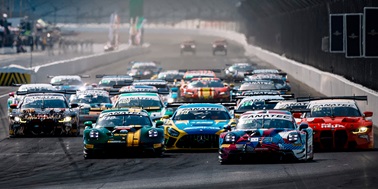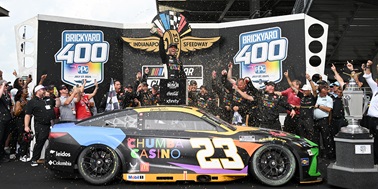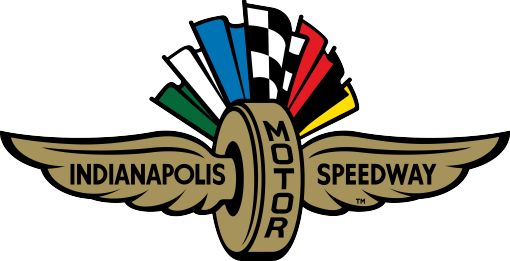In the Red Bull Air Race, Master Class pilots enter the track at 200 knots (230 mph), and by the time they reach the first Vertical Turning Maneuver (VTM) they could be going even faster. They pull back hard on the stick and try to turn around their race plane as quickly as they can, without breaking the rules of the sport and exceeding the 12G limit.
Every millisecond is vital and can be the difference between winning and losing, so the pilots will push as hard as possible. Sometimes that puts them in a penalty situation. When testing the boundaries of a racetrack, pilots can incur a two-second penalty for an “Over G” (if they pull over 10G for more than 0.6 seconds) or a DNF (Did Not Finish) if they exceed 12G. The margins are incredibly tight!
When a pilot exceeds the 12G limit, he is given the order by the Race Tower to “RTB” (Return To Base), as his race plane will need to undergo a G-inspection.
The technical director of the Red Bull Air Race, Jim “Jimbo” Reed, used to be the technician for French Master Class pilot Nicolas Ivanoff and knows what it feels like to suddenly have a G-inspection added to his agenda. But now he is on the other side, and part of his role is ensuring that the technicians are doing the job correctly.
“The G-inspection is the responsibility of the team technician,” Reed said. “They will strip the airplane apart, carry out all the checks, sign each section of the check sheet to say everything is good, and then I, or a delegate, will go and look at the race plane and determine if we find that it’s good, as well. So it’s their inspection, and then the final check is done by me or a delegate. If they do find anything, we, of course, will look over it together.”
Reed mentions “delegates” – qualified members of his onsite team – because at the 2018 season-opening race in Abu Dhabi, the track was so fast that a lot of pilots were pulling more than 12Gs, and therefore a lot of race planes needed inspection in a short amount of time.
Although the technicians have got the G-inspection down to a fine art, it is still a process they would rather avoid. It begins with stripping back the race plane as far as the manufacturer has recommended.
There are specific checks for each variation of race plane: the Edge 540 V2 differs slightly from the V3, and the MXS-R is a different process altogether.
“For the Edge, the checks include (but are not limited to), the cowling, the forward fuselage panel just ahead of the cockpit, the small tail cover, the last foot or two of the turtle deck for the V3s and the entire turtle deck for the V2s, as it comes off as one piece,” Reed said. “Once that’s all off, you can see the engine mount, the wing attach points for the main spar and the aft spar, the seat and seatbelt attachments, all of the truss tubing and the vertical and horizontal tail attachment.”
The technician is looking to see if anything has moved or become compromised.
“We also look at the surfaces of all the composite parts, trying to see if the skin is buckled or deformed,” Reed said. “You look at it with a flashlight shining on the surface to see if there are any deformities. We look at it a million times so we can spot anything irregular.”
Reed explains that process is a lot like looking down the side of a used car you are about to buy: You want to see if there are any dents or deformities that might belie its clean history.
The MXS-R requires a different format to the Edge due to its monocoque structure.
“It doesn’t have the steel-tubular fuselage, so we check the engine mount, the engine mount gears, the engine mount attachment to the race plane, the surfaces of the fuselage and the wings and tail,” Reed said. “There are also two panels underneath the wing at the root, where you can pop those off and see the spar and tension caps and all the fittings and how they’re fitted to the fuselage.”
Pilots do not want to miss a moment of flying, so the technicians know exactly what to check and have got their G-inspections down to a fine art.
“The techs can do it pretty quickly,” Reed said. “In terms of time, the MXS-R is the fastest because it has the least to take apart, and that’ll be about 30 minutes. The V2s are a bit more complex than the V3s, in terms of the way the panels don’t come off individually, so it takes a bit longer. But it’s about 45 minutes in total.”
So far all these inspections have found very little and are testament to the robust nature of the race planes of the Red Bull Air Race.
“We haven’t found much in the past,” Reed said. “Knock on wood, they’re super strong.”
Watch 14 of the world’s best pilots push the boundaries again as the Red Bull Air Race World Championship returns to the Indianapolis Motor Speedway on Oct. 6-7. Visit IMS.com to buy tickets or for more information.
Red Bull Air Race Safety Reaches Heightened Level with G-inspection on Ground

In the Red Bull Air Race, Master Class pilots enter the track at 200 knots (230 mph), and by the time they reach the first Vertical Turning Maneuver (VTM) they could be going even faster. They pull back hard on the stick and try to turn around their race plane as quickly as they can, without breaking the rules of the sport and exceeding the 12G limit.
Latest News
View All News
Fox Corporation Acquires One-Third Interest in Penske Entertainment
Strategic investment, partnership includes a multiyear extension of INDYCAR's media rights with FOX Sports.

Public Days Updated for Indianapolis 8 Hour at IMS
Fans can enjoy two nights of action with headlights on at dusk Oct. 16-18 at the Racing Capital of the World.

Wallace Hangs On To Win Dramatic Brickyard 400 in Double Overtime
Bubba Wallace (photo) became the first African American to win the NASCAR Cup Series crown jewel race at IMS.
